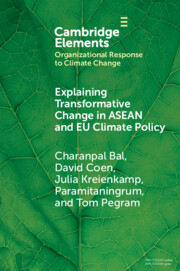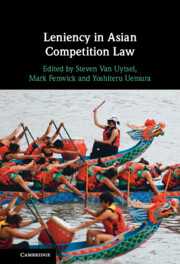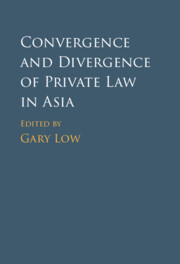65 results
Rewriting the law of international organizations: Whither the Asia Pacific?
-
- Journal:
- Leiden Journal of International Law , First View
- Published online by Cambridge University Press:
- 09 May 2024, pp. 1-22
-
- Article
-
- You have access
- Open access
- HTML
- Export citation
10 - Australia and Southeast Asia
-
-
- Book:
- Australia in World Affairs 1991–1995
- Published online:
- 04 May 2024, pp 108-122
-
- Chapter
- Export citation
10 - Progress and Limits in Regional Cooperation: Australia and Southeast Asia
-
-
- Book:
- Australia in World Affairs 2006–2010
- Published online:
- 04 May 2024, pp 143-159
-
- Chapter
- Export citation
Introduction
-
- Book:
- Energy and the Environment
- Published online:
- 30 April 2024
- Print publication:
- 02 May 2024, pp 1-11
-
- Chapter
- Export citation
Smart Cities and International Trade Law
-
- Journal:
- World Trade Review , First View
- Published online by Cambridge University Press:
- 08 April 2024, pp. 1-22
-
- Article
-
- You have access
- Open access
- HTML
- Export citation
6 - Regionalism the ‘Pacific Way’
-
- Book:
- Regional Politics in Oceania
- Published online:
- 15 February 2024
- Print publication:
- 22 February 2024, pp 142-171
-
- Chapter
- Export citation
Commentary
-
- Book:
- Recentering Pacific Asia
- Published online:
- 03 August 2023
- Print publication:
- 17 August 2023, pp 148-152
-
- Chapter
- Export citation
Chapter 3 - Codifying Patterns of Interaction
-
- Book:
- Conversation in World Englishes
- Published online:
- 30 March 2023
- Print publication:
- 06 April 2023, pp 18-55
-
- Chapter
- Export citation

Explaining Transformative Change in ASEAN and EU Climate Policy
- Multilevel Problems, Policies and Politics
-
- Published online:
- 03 April 2023
- Print publication:
- 13 April 2023
-
- Element
-
- You have access
- Open access
- HTML
- Export citation
8 - From K-Pop to Z-Pop
- from Part IV - The Making of Idols
-
-
- Book:
- The Cambridge Companion to K-Pop
- Published online:
- 02 March 2023
- Print publication:
- 09 March 2023, pp 154-172
-
- Chapter
- Export citation
New Investment Rulemaking in Asia: Between Regionalism and Domestication
-
- Journal:
- World Trade Review / Volume 22 / Issue 1 / February 2023
- Published online by Cambridge University Press:
- 13 January 2023, pp. 173-192
- Print publication:
- February 2023
-
- Article
-
- You have access
- Open access
- HTML
- Export citation
Governance and human rights implications of ASEAN's Smart Cities Network: a knowledge commons analysis
-
- Journal:
- International Journal of Law in Context / Volume 19 / Issue 1 / March 2023
- Published online by Cambridge University Press:
- 28 September 2022, pp. 13-31
-
- Article
-
- You have access
- Open access
- HTML
- Export citation
3 - International Guidelines and Best Practices on Leniency Programmes
- from Part II - Leniency in Historical, International and Theoretical Context
-
-
- Book:
- Leniency in Asian Competition Law
- Published online:
- 15 September 2022
- Print publication:
- 22 September 2022, pp 67-103
-
- Chapter
- Export citation

Leniency in Asian Competition Law
-
- Published online:
- 15 September 2022
- Print publication:
- 22 September 2022
24 - Competition Law Sanctions in Indonesia and a Comparison to Other ASEAN Member States
- from Part II - Country Reports
-
-
- Book:
- The Cambridge Handbook of Competition Law Sanctions
- Published online:
- 29 July 2022
- Print publication:
- 23 June 2022, pp 460-477
-
- Chapter
- Export citation
1 - Introduction
-
-
- Book:
- Convergence and Divergence of Private Law in Asia
- Published online:
- 17 February 2022
- Print publication:
- 24 February 2022, pp 1-6
-
- Chapter
- Export citation

Convergence and Divergence of Private Law in Asia
-
- Published online:
- 17 February 2022
- Print publication:
- 24 February 2022
18 - Government communication on transboundary haze: The nexus between public health and tourism
- from Part II - Sustainable Development: Challenges and Opportunities
-
-
- Book:
- Sustainable Development: Asia-Pacific Perspectives
- Published online:
- 23 December 2021
- Print publication:
- 13 January 2022, pp 220-230
-
- Chapter
- Export citation
8 - Investment Agreements and Regulatory Space in Indonesia
- from Part III - The Rebalancing of Regulatory Space and Investor Protection in Asia
-
-
- Book:
- The Asian Turn in Foreign Investment
- Published online:
- 13 August 2021
- Print publication:
- 26 August 2021, pp 118-135
-
- Chapter
- Export citation
11 - The ASEAN Legal Framework for Free Trade and the Promotion and Protection of Foreign Investment
- from Part IV - Multilateral Rule-Making in Asia on Trade and Investment: From ASEAN to the Comprehensive and Progressive Agreement for Trans-Pacific Partnership
-
-
- Book:
- The Asian Turn in Foreign Investment
- Published online:
- 13 August 2021
- Print publication:
- 26 August 2021, pp 183-198
-
- Chapter
- Export citation



